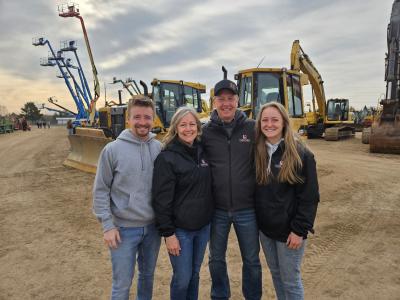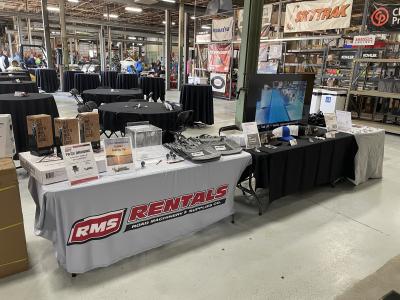After it received $223 million as a special “earmark” project in last year’s highway and transportation bill, the bridge between Gravina Island and Ketchikan in Southeast Alaska was called “The Bridge to Nowhere.”
Critics pointed out that Gravina only had approximately 50 residents, while Ketchikan had approximately 8,000. Connecting them with a bridge would cost a total of $315 million.
They also declared that this special bridge was only included in last year’s highway and transportation bill because it was sponsored by Rep. Don Young, R-AK, a dominant figure in transportation funding, because he is chairman of the House Transportation and Infrastructure Committee.
Now the question is: “What are the plans for the Bridge to Nowhere; when will it be built?”
No one seems to know for sure.
Young isn’t commenting. His press office referred all calls to the transportation committee’s communications director, who did not return repeated phone requests for information.
Rescinded Earmarks
Feeling the heat from critics who said the money was needed for Hurricane Katrina relief and direly deteriorated Alaskan roads, Young and Sen. Ted Stevens, R-AK, last year, rescinded the $223 million high-priority earmark status for Gravina and for the $229 million “Don Young’s Way” (formerly the Kruk Arm Bridge) in Anchorage.
The two earmarks were “de-earmarked” (rescinded) in the Independent Appropriations Act providing funds for Fiscal 2006.
(Earmarks, which critics sometimes call “pork,” are special projects inserted by members of Congress apart from the usual state planning process.)
Alaska’s General Transportation Fund still received the funds that were authorized, but the state legislature doesn’t have to use the reprogrammed money for the bridges. It may or may not fund part of the bridge projects during its current session.
“I’m sitting here waiting for a message on what they want to do,” said Jim Lowell, the Alaska Department of Transportation and Public Facilities project manager in Juneau, AK, for the Ketchikan Gravina Island Access Project.
“I don’t think the project is in doubt, but it’s not happening tomorrow, let’s put it that way. This legislature won’t be acting on anything until around the middle of May, and the governor won’t sign the new capital budget until July. Until then, we really don’t know what kind of funding we have for the bridge. It’s probably going to happen in phases. That’s what the legislature will wrestle with. We’re in a holding pattern.”
Gov. Frank Murkowski has proposed spending a total of $185 million in federal and state money to start the construction process on both bridges.
Adding to the confusion, one unconfirmed report said that $48 million in the earmark funds was not reprogrammed. “It sounds like that money is still in for the bridge,” said the source.
An environmental impact statement for the bridge project was completed and released for pubic comment on Aug. 6, 2004.
The bridge still must be designed. The intent has been to construct it under a design/build project-delivery system allowing design and construction to proceed concurrently.
Young had told business groups in speeches in early 2001 that his chairmanship would be a platform for implementing the two bridges. Speculators, who, according to press reports, included political figures in Alaska, purchased land at both sites.
The previous transportation bill in 1998 allocated $20.4 million for construction of the bridge.
Furor Erupts
Both bridges were included in the record 6,371 earmark projects, valued to $24 billion, which Congress inserted in last year’s transportation bill apart from the usual state planning process.
Alaska’s 120 earmark projects were valued at $1 billion, which was $1,501 per person in the state. The national per capita average for the 49 other states is $83.
The transportation bill was signed on Aug. 10, 2005, before Hurricane Katrina devastated the Louisiana-Mississippi coastline.
In October, after the hurricane, Sen. Tom Coburn, R-OK, tried to amend the Fiscal Year 2006 transportation spending bill and remove funding for the two bridges, using it instead for rebuilding the Interstate 10 bridge over Lake Pontchartrain in New Orleans. His amendment failed by a vote of 85-12.
“Here was all this money going to the bridges while people hit by Katrina were suffering and desperate for help,” said Erich Zimmermann, senior public analyst for Taxpayers for Common Sense (TCS), a non-partisan budget watchdog group in Washington, D.C., devoted to cutting wasteful government spending.
“The Alaska congressmen got a lot of heat for this and because the bridge spending would put a real squeeze on general funding for infrastructure maintenance in the state.”
Long Bridge Structure
The Gravina Island project includes approximately 1.2 mi. of bridge structure. Spanning two channels of the Tongass Narrows, it would be approximately as long as the Golden Gate Bridge in San Francisco, CA, and higher than the Brooklyn Bridge.
The bridge would first connect Gravina and Pennock Island, which is in the middle of the Narrows, with a 2,590-ft. long 160-ft. high span across the West Channel, and then connect Pennock with Revilla Island, where Ketchikan is located, via a second span, 3,610 ft. long and 250 ft. high, over the East Channel. Ketchikan has approximately 8,000 residents (13,000 if the entire county in included.)
The bridge, which would replace a seven-minute vehicle-and-passenger airport ferry ride, would be part of a 7-mi. new roadway between Gravina Island and Revilla Island.
The Alaska Department of Transportation (AKDOT), in its Gravina Access Web site, said the proposed span, which is part of the DOT’s Southeast Alaska Transportation Plan, is “key to improving air access to Ketchikan and outlying communities.”
The department said that the Ketchikan Gateway Borough, which is the planning authority for the project area, has supported more than a dozen studies and plans since 1981, all indicating that “lack of access to borough lands on Gravina Island has made it difficult for the borough to adequately meet the needs of its citizens for reasonable growth and development.”
Tongass Narrows is an active waterway used by boating ranging from recreational craft to ocean-going vessels such as large cruise ships.
A Supporter Speaks Out
Project Manager Lowell believes the Bridge to Nowhere actually has a bright future.
“There are a lot of reasons why this project makes sense from an economic and regional standpoint,” he told Construction Equipment Guide (CEG). “You have an airport [Ketchikan International] on Gravina, which has the capacity to accommodate growth, whereas Ketchikan doesn’t because it’s centered on a steep linear hillside, and on waterfront.
“Right now, Gravina is served by a small, little tumbleweed ferry [seven per day]. The island is growing, and access [via the bridge] will certainly make it grow at a faster rate. A lot of development plans are floating around for that island, and some industry is there already.
“Why is the bridge necessary? You have to understand the geographical perspective on what Ketchikan is all about. On the surface the county may only have 13,000 people but it is a regional economic hub, with a lot of people coming in and out.
“I live in Juneau myself. Back in 1938, we built a bridge from the mainland to Douglas Island, where I live. I can tell you, Douglas Island would not look like it does today if everybody had to take a ferry. The Gravina Bridge will spur economic growth. There’s no doubt about it.”
Budget Watchdog Group Opposes
Taxpayers for Common Sense said the Bridge to Nowhere shouldn’t be built at this time because other infrastructure needs have higher priority.
“Given the safety and congestion needs, and the gamut of transportation priorities in this country, this project looks ridiculous,” said Zimmermann, policy analyst. “It just doesn’t measure up to the federal program.”
The group’s Web site (taxpayer.net) said, “Rep. Young should be stopped from using his political clout to force federal taxpayers to pay for a bridge that is ridiculous in his scope, unjustified on its merits, and far too expensive for taxpayers to swallow at a time of record federal deficits.
“The ferry system adequately handles passenger traffic between the islands, including traffic to and from the airport,” it said. “When people come to Ketchikan, that little ferry is what they remember.”
TCS said the bridge’s cost per resident would be $23,649 compared with $2,414 per person on Boston’s Big Dig project, adding, “Taxpayers will subsidize each trip over Gravina Bridge to the tune of more than $43, compared with about $4 for each Big Dig trip.”
TCS also questioned how much development the bridge would generate.
“Some herald the project as the savior of Ketchikan because it will open up land on Pennock Island to residential development, despite the fact that Ketchikan’s population has been shrinking, ” the Web site said. CEG
Today's top stories















